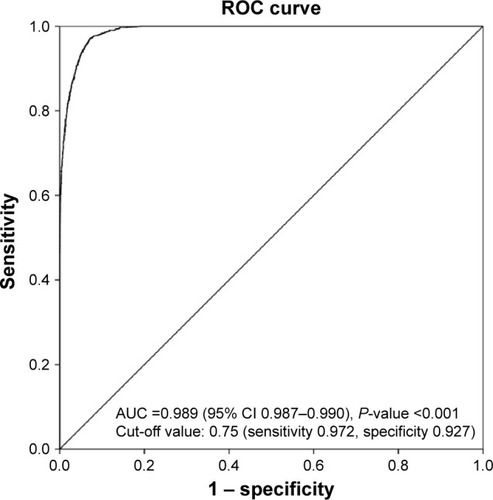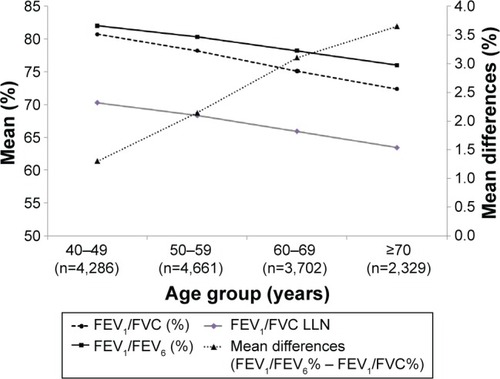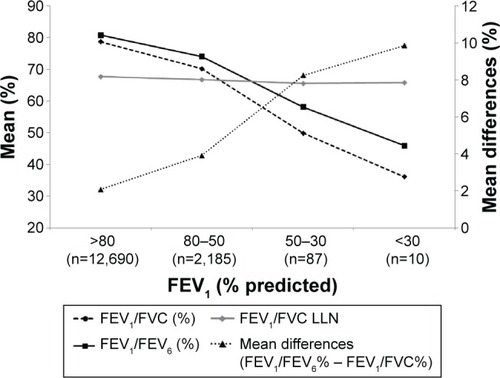Figures & data
Table 1 Baseline characteristics of the study population
Table 2 Sensitivities and specificities of thresholds of FEV1/FEV6 for predicting FEV1/FVC <70%
Table 3 Comparison of FEV1/FEV6 with FEV1/FVC for diagnosing airway obstruction
Table 4 Comparison of FEV1/FEV6 with FEV1/FVC for the diagnosis of normal, restricted, and obstruction patterns
Figure 1 A receiver operating characteristic (ROC) curve showing the ability of FEV1/FEV6 to diagnose FEV1/FVC <70%.
Abbreviations: FEV1, forced expiratory volume in 1 second; FEV6, forced expiratory volume in 6 seconds; FVC, forced vital capacity; AUC, area under the curve.

Table 5 Comparison of FEV1/FVC LLN with FEV1/FVC <70% or FEV1/FEV6 <75%
Table 6 Age and forced expiratory volume in 1 second (FEV1) dependency of the lower limit of normal (LLN) for FEV1/forced vital capacity (FVC) and FEV1/forced expiratory volume in 6 seconds (FEV6) in airway obstruction
Figure 2 FEV1/FVC LLN, FEV1/FVC, FEV1/FEV6, and the mean difference between FEV1/FEV6 and FEV1/FVC according to the age group.
Notes: With increasing age, the mean difference between FEV1/FEV6 and FEV1/FVC was increasingly larger. However, the mean difference between FEV1/FVC LLN and FEV1/FVC or FEV1/FEV6 showed only a slight difference.
Abbreviations: FEV1, forced expiratory volume in 1 second; FEV6, forced expiratory volume in 6 seconds; FVC, forced vital capacity; LLN, lower limit of normal.

Figure 3 FEV1/FVC LLN, FEV1/FVC, FEV1/FEV6, and the mean difference between FEV1/FEV6 and FEV1/FVC according to the FEV1 (%) group.
Abbreviations: FEV1, forced expiratory volume in 1 second; FEV6, forced expiratory volume in 6 seconds; FVC, forced vital capacity; LLN, lower limit of normal.

